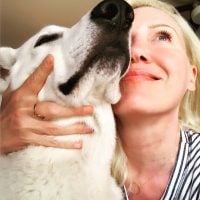
What lurks beneath the surface of our everyday persona?
What experiences, emotions, and beliefs from the past linger and hover, ghost-like, as we go about the business of living, coloring everything we see with a tint that is uniquely ours, and which is in some ways wonderful, and in others, painfully limiting?
Within each of us is a complex assemblage of all our former selves, often hidden from view but as alive now as they were in infancy, in early and middle childhood, in adolescence, and beyond. And all the relationships we had as those former selves are alive and well too, being endlessly repeated in various forms as we play out the themes of our lives, which represent the wounds we are eternally trying to heal.
If I let myself, I can easily remember who I was at six—a hapless, slightly overweight, and too-tall kid who regularly waited outside neighbor kids’ houses like a stray dog hoping they might play with me. I can equally easily remember seventh grade me, replete with a full-body scoliosis brace, the new kid in a town that didn’t take kindly to interlopers, especially if they weren’t wearing the right clothes.
Then there’s 25 year old me; I can vividly see her: young and shiny and hopeful on a first date with the person who would summon forth all my prior selves to (supposedly) cherish and hold them, only to weaponize every shared memory for the next five years with focused cruelty.
When I let myself remember, it is like these former selves are still exactly as they were, living their lives concurrently to mine, and in fact, there is a lot of truth to that.
For the most part, like most people, I’ve simply carried these former me’s of mine around like a giant backpack, their weight dragging on every forward movement but their presence largely unacknowledged. Every now and then, one of them peaks out, waves a shaky hand, and demands to be remembered, but mostly, they stay hidden in their place, buttoned up and tucked away just the way I like it.
As a therapist, though, I recognize that suppression and avoidance is not the best idea if I want to optimize my mental health. And recently, my mental health has been, shall we say, less than glowing, so I decided maybe some shadow work was in order.
The “shadow self,” a Jungian idea, describes the parts of ourselves that are defined by shame, that are repressed, hidden, and tucked away. By learning to unpack these selves, much like turning on a light in a dark room we imagine is full of monsters, we see that, in reality, the monsters are small and frightened, and that maybe there is even a way to make friends with them.
Despite its daunting name and old school psychiatric origins, shadow work is actually pretty straightforward and the benefits are profound. We can learn deep stuff about our fears and what we need to overcome them that can transform how we look ourselves. It helps us find compassion for our lost child, re-parent ourselves, and connect to our inner strength. Not bad for a little quiet time!
Standard methods for doing shadow work usually include things like dream analysis, psychoanalysis, journaling, or sand tray play, but I think it’s equally effective to just…go inside.
Here’s how:
1. Find a quiet place where you will be undisturbed and sit comfortably or lie down. Plan on staying here for at least 15-20 minutes and have a journal handy to jot down notes afterwards if you wish. Close your eyes and relax each part of you body beginning with the face, moving to the neck, the chest, the shoulders, the hands, the back, the belly, the hips, the thighs, the knees and the feet. Enjoy this sensation of relaxation without any pressure or worry about what comes next.
2. Allow yourself to float along the years of your life, lingering on times when you felt “less than.” Settle on one where you feel particularly vulnerable, a version of yourself that makes you feel sad, ashamed, or scared. Picture yourself in great detail; imagine what you are wearing, what it looks like around you, and how old you are. Let yourself remain here for as long as you want to.
3. Now imagine that present you enters the scene. Now-You floats in and sits next to Past-You, feeling strong and calm and says, “I see that you are sad/angry/scared/ashamed. Can you tell me what you need?” Listen carefully. And then offer yourself that thing.
When I did this, and asked my past self what I needed, the answer came with such force and clarity it knocked me off my feet. “A friend,” I heard my own voice say, and in the deepest part of my heart I knew that that was true.
A friend is what I’d never truly had. Someone who loved me and liked me and wanted to be around me without complication or selfishness. I’d been lonely all my life, looking for someone to connect to in an authentic way, and often making a fool of myself in the process, filled with shame that no one seemed to meet me there. And as cheesy as this may sound, I fully understood in that moment that I could befriend myself. I could look at the vulnerable me of the past and say, “I get it. I’m here. We’ll be okay.”
We all have different wounds that need healing. Mostly, they are hidden under layers of defenses that we put in place to manage them, forget about them, mitigate them. We’ve had to do that in order to survive.
But, we are older now and stronger now, and we can peel back those layers and take a good long look at what’s beneath. What we find will be much less scary than we imagine. We will find ourselves, plain, vulnerable, and longing to be whole.
~
Please consider Boosting our authors’ articles in their first week to help them win Elephant’s Ecosystem so they can get paid and write more.











Read 3 comments and reply